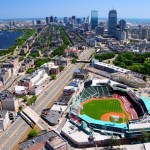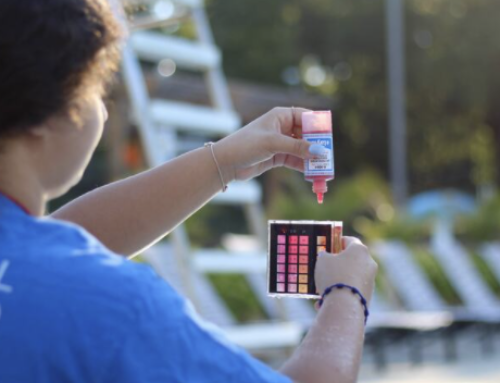Public pools may have been replaced by private backyard swimming holes in terms of popularity over the last few decades, but that hasn’t erased the image of the publicly accessible pool as a center of urban activity and recreation. Families used to flock to municipal parks and facilities for much more than just a swim – sometimes they would spend whole days on picnics taking in the scenery.
Such scenes are few and far between nowadays, most notably because of the dwindling number of cities that are willing to finance the pool maintenance services their facilities desperately need. While cities out west are being pressed for cash from costly droughts, places like Boston have a tradition of public aquatics that they’re not willing to part with. The home of America’s oldest public park and swimming facility, the Boston Common and Frog Pond still stand today as symbols of a time when commercial pools were the focal point of city life.
Colonial beginnings
It’s safe to say that pretty much everything back in 1634 was different, and Boston’s physical landscape was certainly no exception. The location of today’s Boston Common is nestled in the Back Bay neighborhood, and though it’s now separated from the harbor by miles of landfill, the park was once adjacent to marshlands fed by inlets from the Atlantic Ocean. The Friends of the Public Garden explained that the city purchased this 48-acre plot of land from a wealthy European colonialist and taxed 17th-century Bostonians six shillings each to cover the bill.
The grassy areas of Boston Common were originally intended to serve as communal grazing lands for settlers with cattle – the agrarian economy of the time necessitated large tracts of grasslands in the otherwise crowded city of Boston. However, city planners made another purely recreation addition to the park as well.
The oddly named Frog Pond wading pool was also added during the late 1600s. CelebrateBoston.com offered one explanation for the name – when British soldiers stationed on the Common sought game to hunt, they targeted frogs resting in a marshy area. Frog Pond was initially naturally fed by runoff from a nearby hill in the Common, but it was paved over in the 19th century and modern filtration systems have been tacked on over time to protect the facility and its swimmers.
Why public pools?
Plopping a hastily designed park down into any mid-sized city likely won’t have any significant effect on citizens’ daily lives, but facilities with a little forethought and preparation behind them might be a different story entirely. The American Planning Association explained that an interconnected system of parks and commercial pools can dramatically transform cities for the better.
In the event of a natural disaster, the natural drainage systems inherent in public parks – runoff sources, groundwater absorption and reuptake – reduce the strain on sewage infrastructures that are costly to install and maintain. The APA also noted that parks serve as a central gathering point for people in search of recreation and luxury, which leads to increased economic activity in the area. Public parks, especially swimming facilities, increase the health of cities surveyed by the APA by allowing citizens to exercise and wash without a major investment.
Common goals
Frog Pond may be America’s oldest public swimming facility, and its pool management have picked up some tips and tricks over the course of their nearly 400-year history. In the summer, Frog Pond is filled with chilled knee-high water that’s perfect for wading, swimming with small children or just relaxing on a hot summer day. In the winter, the facility transforms into a public ice skating rink, complete with miniature boards and a specialized ice resurfacer to keep the skating surface smooth for patrons.
Boston is one of the oldest major cities in the country, but history alone doesn’t explain how Frog Pond and the Boston Common have come to occupy such central geographic and social positions in Bostonians’ lives. For that, city planners from centuries past cultivated the public facilities for such egalitarian future use.
Whether it’s hot or cold out, do the Founding Fathers a solid and visit your local public pool today.





